Strategic Paths and Map Ideation
Using Cognitive Maps to Their Fullest Extent
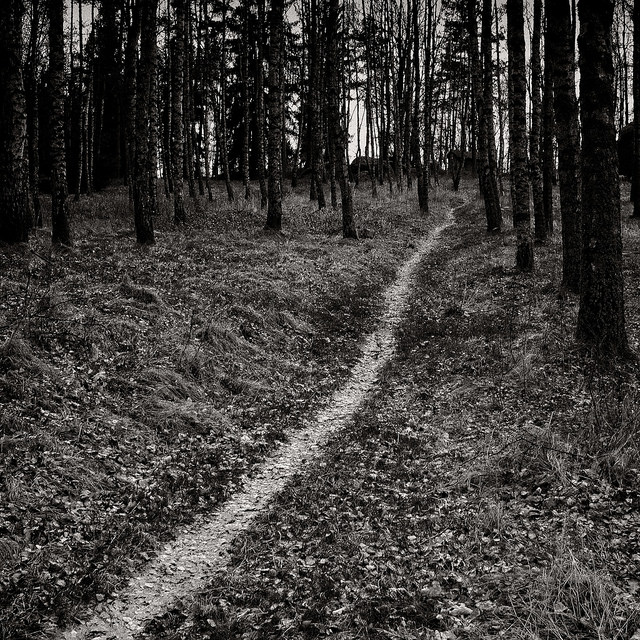
After going through the rigor of interviewing early adopters or a test sample of customers, eliciting Means End Chains, and mapping each interview, it could be easy to consider the Overall Map to be a "summary" to capture what was said in interviews. And the tendency can then be to believe that one "has a handle" on the interviews and analysis from the individual interviews, and to therefore skip this final step. That would be a misstep, as you would be leaving an opportunity for significant strategic learning behind:
- You are literally looking at the consensus thoughts and connections your customers make about the offering.
- This map can be used as the "baseline" from which you can build subsequent learnings in the future.
- It is a lasting document you will find yourself using regularly early in the offering.
- It is an excellent way to educate others in your organization, as well as a very efficient way to get partners and agencies up to speed.
The process of creating the map will be illuminating, as those involved most in the offering will start to see "what made it" onto the map, and what fell short. You will see concepts that weren't anywhere on the organization's collective radar appearing en masse, and some associations which you had hoped for nowhere to be seen. You will find the participants seem to have almost premeditated levels of attention to some innocuous details, and other concepts will be so in line with strategy that some in your organization will accuse you of witness tampering. This is perfect. Why?
What you will find is that going through the steps of interviewing and creating a Map will bring you ample amounts of truth and potential for innovation.
Importantly, you will see opportunities to add concepts or reframe adjacent thoughts and feelings that users already have as opposed to trying to create new thoughts in less-related spaces. Think of refining strategy and messaging as being similar to remodeling a home. You will be presented with the existing blueprint of the home (the Map), and will find that some of the parts of the structure may be more easily adapted or modified than others. For this reason, it is typically more efficient to maximize spaces in the existing structure or add on than it is to build a completely new room detached from the house.
We see this idea represented in the words of Gerald Zaltman from our last topic: "...no matter how radical a new product is, it will always be perceived initially in terms of some frame of reference." Moving highly embedded frames can take tremendous effort and require years of work, but we may be able to reach the same ends using different means, so to speak.
Types of Map Ideation
To illustrate these points, here are examples of a few analyses and strategies you can use on your Map:
What concepts were UNDERWEIGHTED compared to our expectations?
Despite marketers' and product developers' best efforts, there will be attributes, benefits, and associations that users just didn't "get." Depending on your cutoff threshold, these concepts may make the Map, but at a far lower level than anticipated.
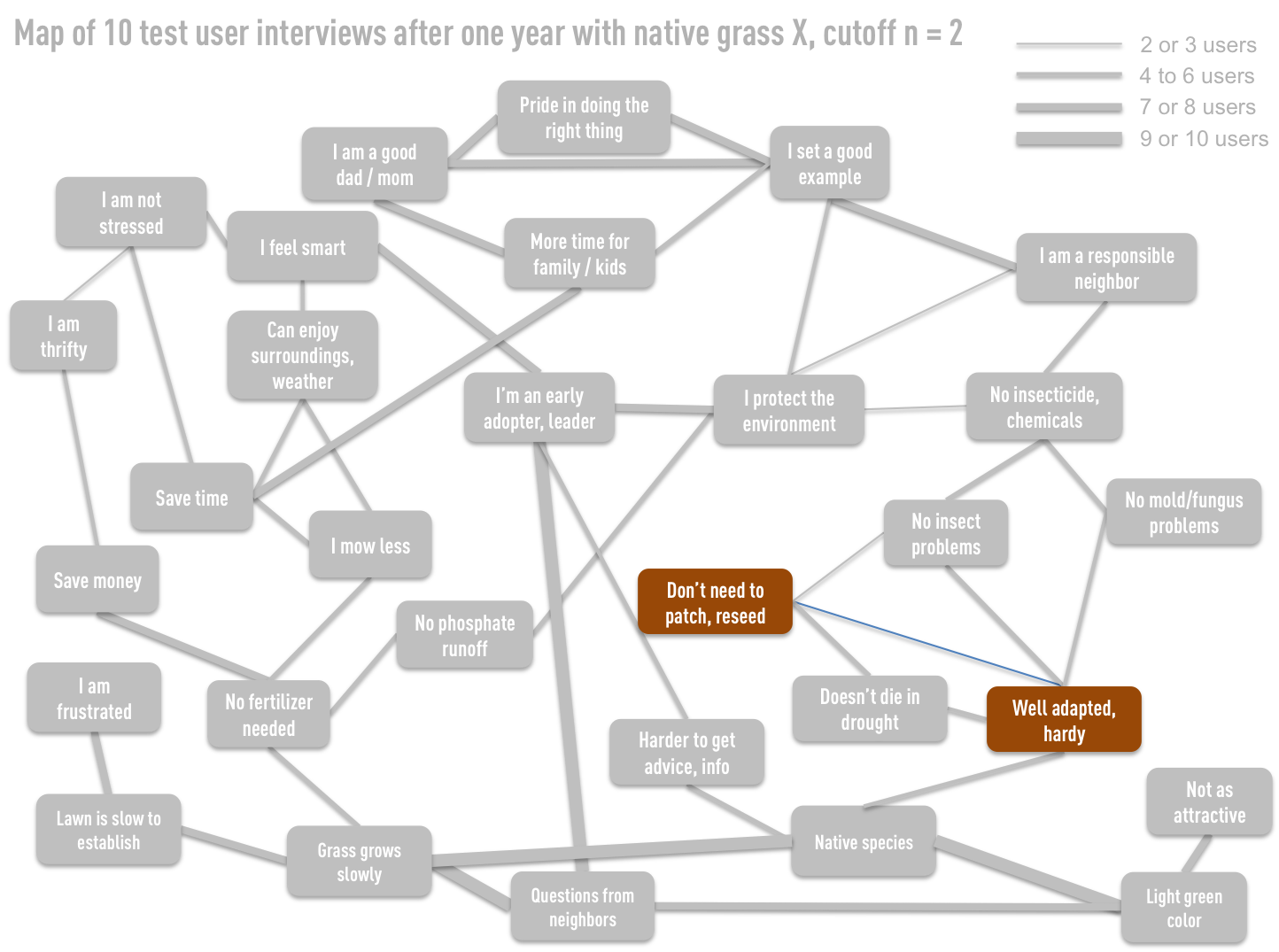
In this case, perhaps you expected that "Well adapted, hardy" and "Don't need to patch, reseed" would have been much more strongly linked. Maybe users just didn't see that as a concern, or maybe these users haven't had problems with die-off before. From there, you could do some quick survey work to understand if the broad market even considers die-off a problem, or if you're trying to market to a problem that doesn't really exist.
Implication: This is more of a "first pass" question to ask yourself to get started, as it tends to be the most obvious analysis.
What concepts were OVERWEIGHTED compared to our expectations?
Sometimes, concepts or associations make the map that would have been completely unexpected to your team, and sometimes concepts you thought would be minor turn out to quite prevalent.
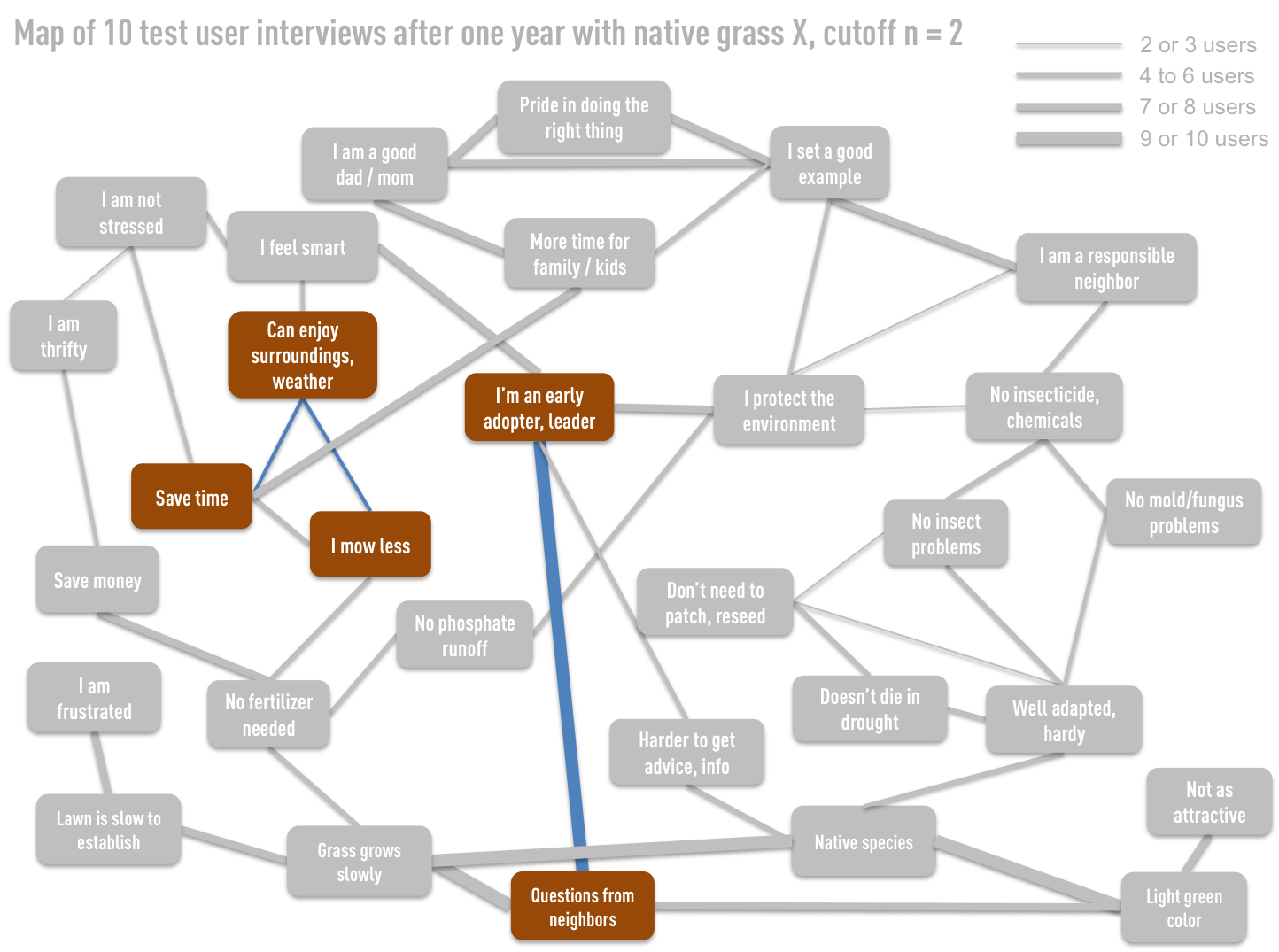
For example, perhaps "Can enjoy surroundings, weather" could fall into that group, as the link you saw as most important may have been straight from "I mow less" to "Save time." But time and time again users would talk about the fact that 'the times when the grass is growing so fast you have to mow every two days are also some of the most beautiful to be outside, especially late Fall and early Spring.'
There is also a prevalent connection from "Questions from neighbors" to "I'm an early adopter, leader" which you may have expected, but not with that level of potency that makes it one of the three strongest associations on the Map.
Needless to say, these are the types of insights and nuances that can mean the difference between a generic and truly resonant strategy.
What links would we like to REINFORCE or ADD?
At this point, we can go beyond general acknowledgement of concepts which may be underweighted and begin to specifically discuss those concepts we will seek to strengthen in the minds of users. The key at this point is to not concern ourselves with the tactics of how we will strengthen the desired concepts, but instead the pure consideration of what we want the Map to look like in the end. Later, we can use this as the framework by which to refine the offering, tune messaging, change the overall use experience, and more.
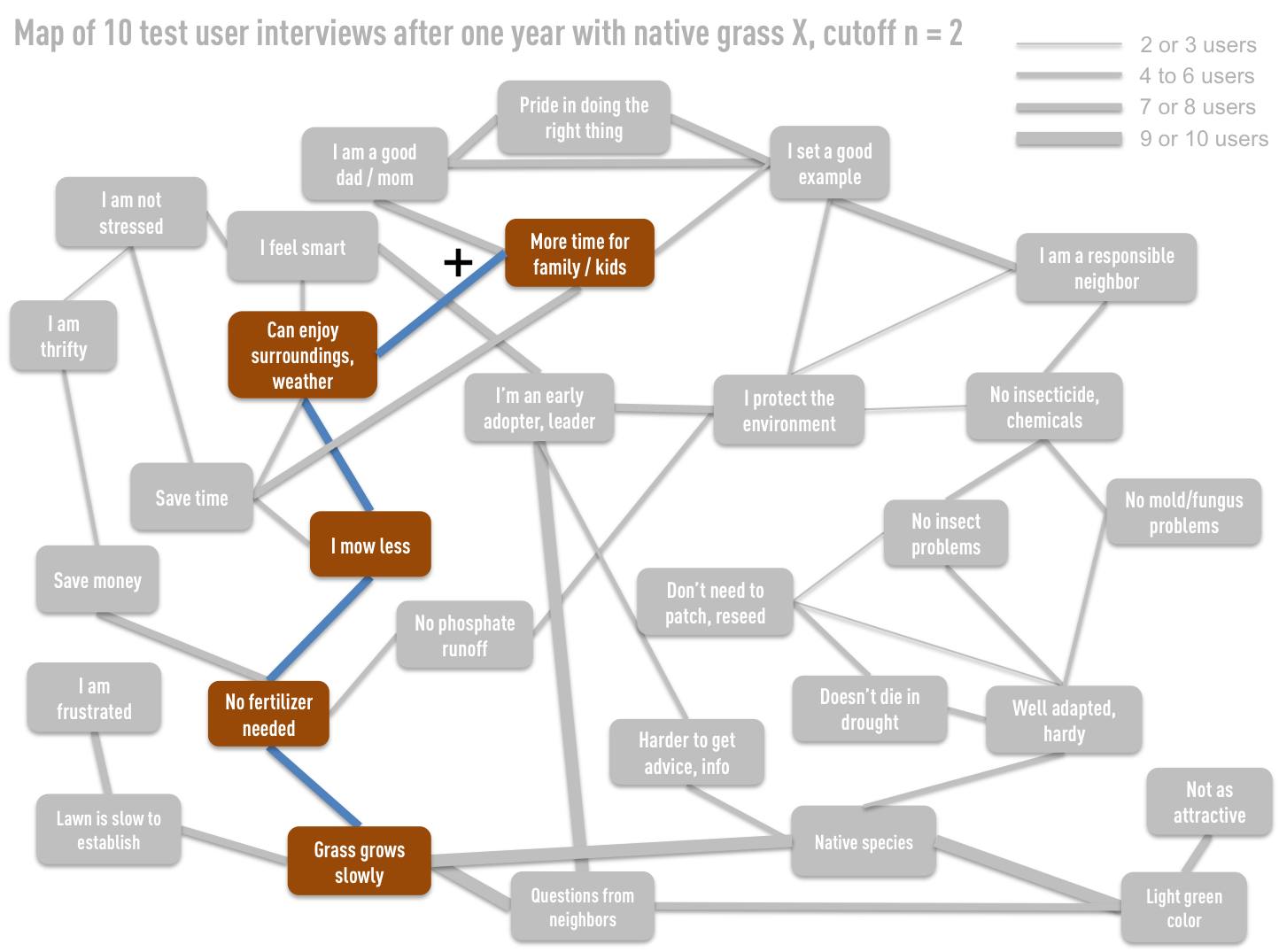
In this case, perhaps we really want to own the idea of "Can enjoy surroundings, weather" because it is not only strategically potent for us, but it is emotionally potent for users who are generally "outdoorsy" anyway. But, if we look at the weighted Map, all of the paths to that concept are happening at a low level, and furthermore, the connection to the attribute level (i.e., the seed we are selling) is equally weak. So, we may seek to reinforce the path from "Grass grows slowly" to "Can enjoy surroundings, weather," and add a link from there to the already potent "More time for family/kids."
Reinforcing concepts that are already present on the Map–even at a low level–is significantly more efficient and resonant than trying to create entirely new ideas or regions of thought. For this reason, the moves you take to reinforce links tend to be among the most beneficial.
What links would we like to ERASE?
On the other side of the spectrum, when we start actively talking about strategic goals, there will be concepts and links which we wish to minimize or eliminate altogether.
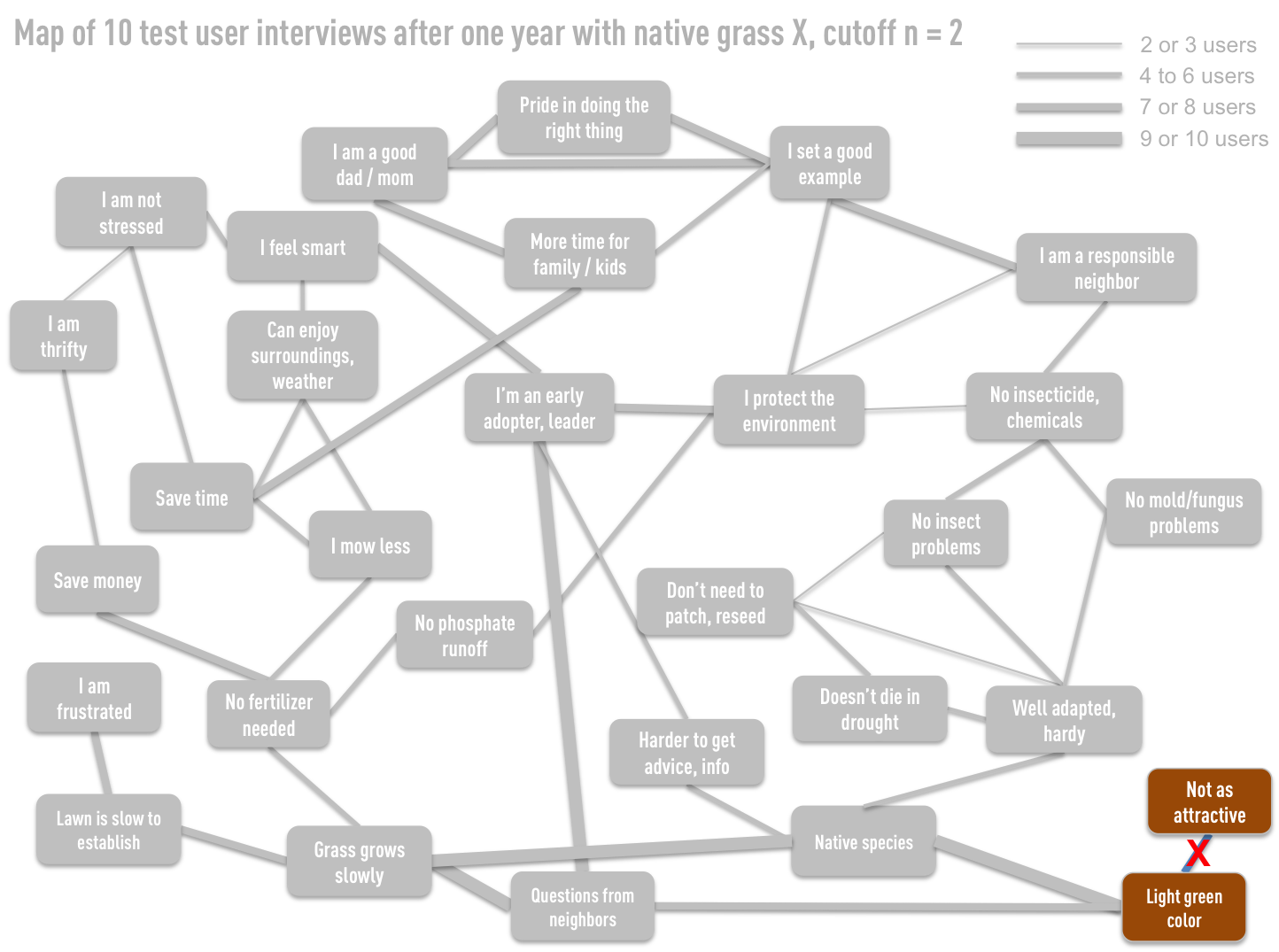
We have something interesting here, and that is a little bit of a duality around "Light green color." About half of the users associated this with "Not as attractive," which is certainly a problem for us. BUT, "Light green color" is also a prime pathway to "Questions from neighbors" (because the grasses do look so different), which then triggers a tree trunk of a link to "I'm an early adopter, leader." If we seek to use this to our advantage, we want to own the light green color, and reinforce it as a point of pride. (For example, did you know that the native grasses of Europe, such as Poa Trivialis, are lighter green by nature, and that Europeans overwhelmingly prefer this color over the darker–water and fertilizer hungry–Kentucky Bluegrasses and Perennial Ryes that Americans are conditioned to?)
What are the most strategically interesting PATHWAYS?
At this point, we take a little wider strategic view and create pathways, from Attribute to Emotional End, we think are differentiated, ownable, and important to customers. Remember the Clouds and Roots: We need to limit these paths and leverage them as strongly as we can. If users make other associations naturally, that is excellent... but we need to own one or two paths in the minds of customers.
Take a look yourself for other pathways you think could be of interest.
Where do we potentially have WHITE, GRAY, OR BLACK SPACE opportunities?
As a final check, we want to look at the Map for any potential areas of WGB space opportunity.
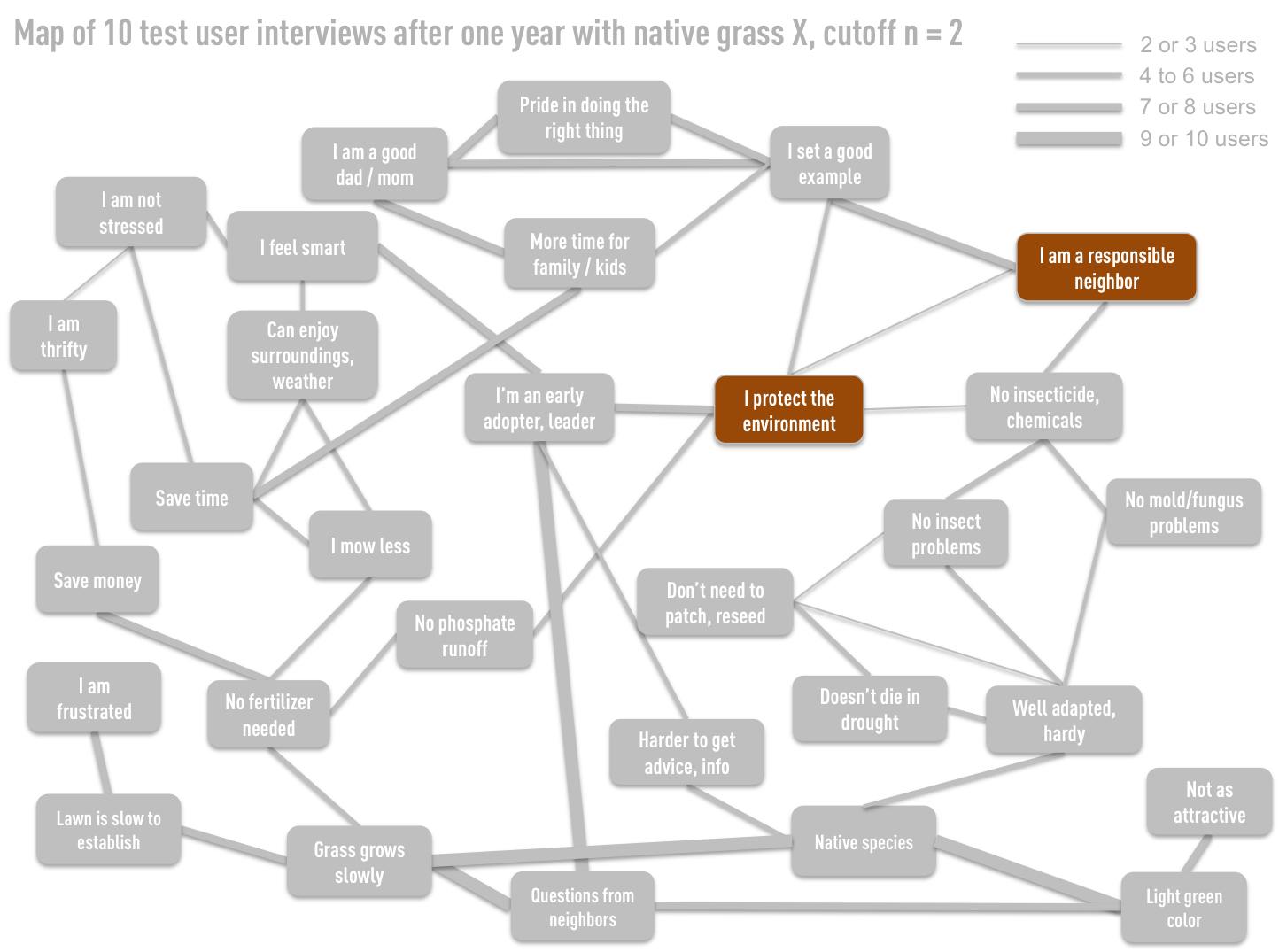
For example, if I really wanted to take a stand against the lawn industry Black Space, I could use "I am a responsible neighbor" as a wedge issue of sorts. The platform could be to turn the "keeping up with the Joneses" curb appeal competitions from a badge of pride into something not to be proud of. I would cut humorous ads showing people manicuring their lawns while their kids sat on the driveway, and make a point of encouraging people to look past those who have the "greenest lawn" and to those who have the safest lawn for my kids to play on.
If I'm thinking White Space, maybe I do a little bit of research into the environmental impacts of a high maintenance lawn, from the carbon footprint to the impacts on water and air quality. The results could be surprising, and could be used to gain support of NGOs.
We will be doing some mapping and strategy work this week, and my hope is to be able to help you see how Maps can be used to drive and refine innovation in an rigorous way.
